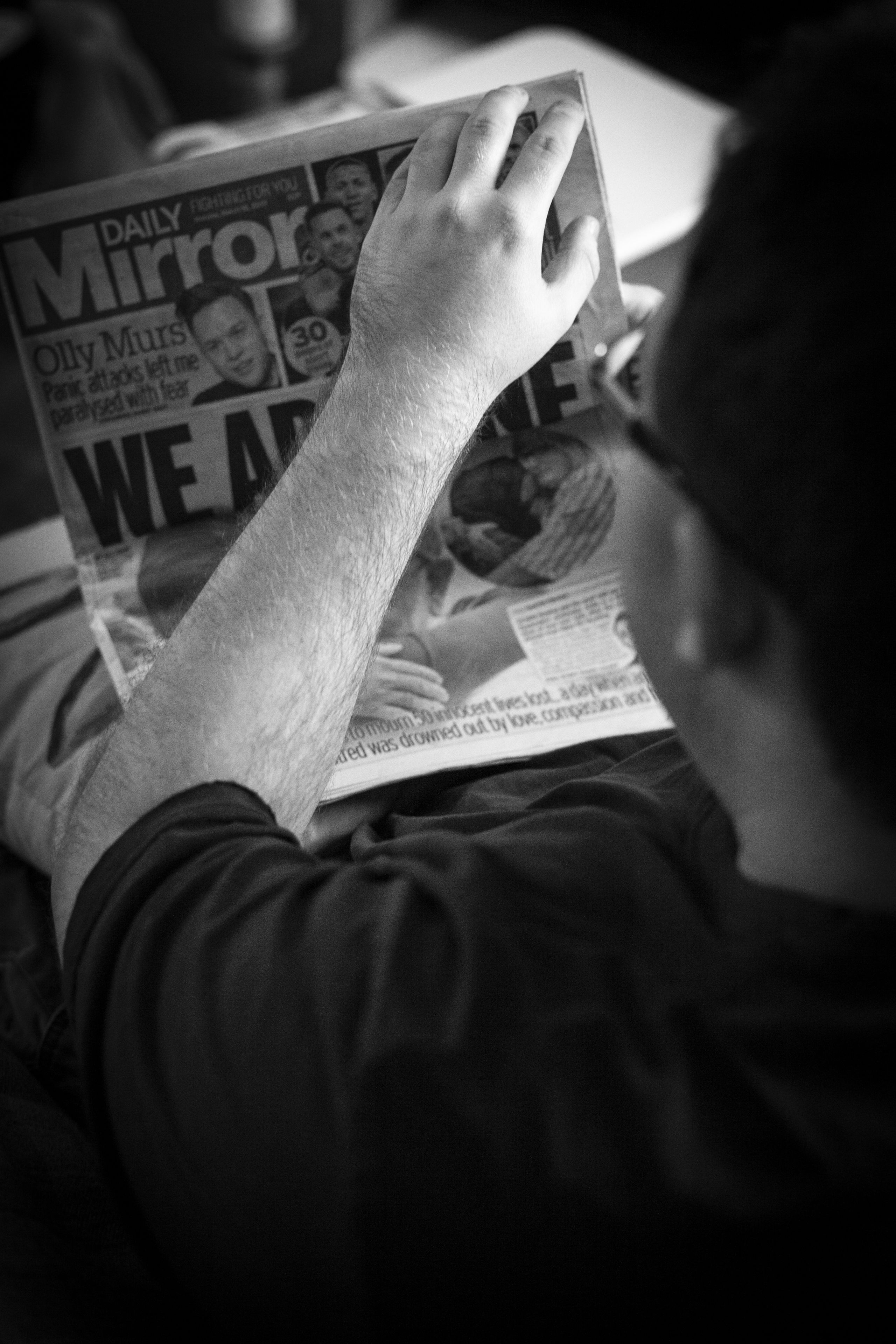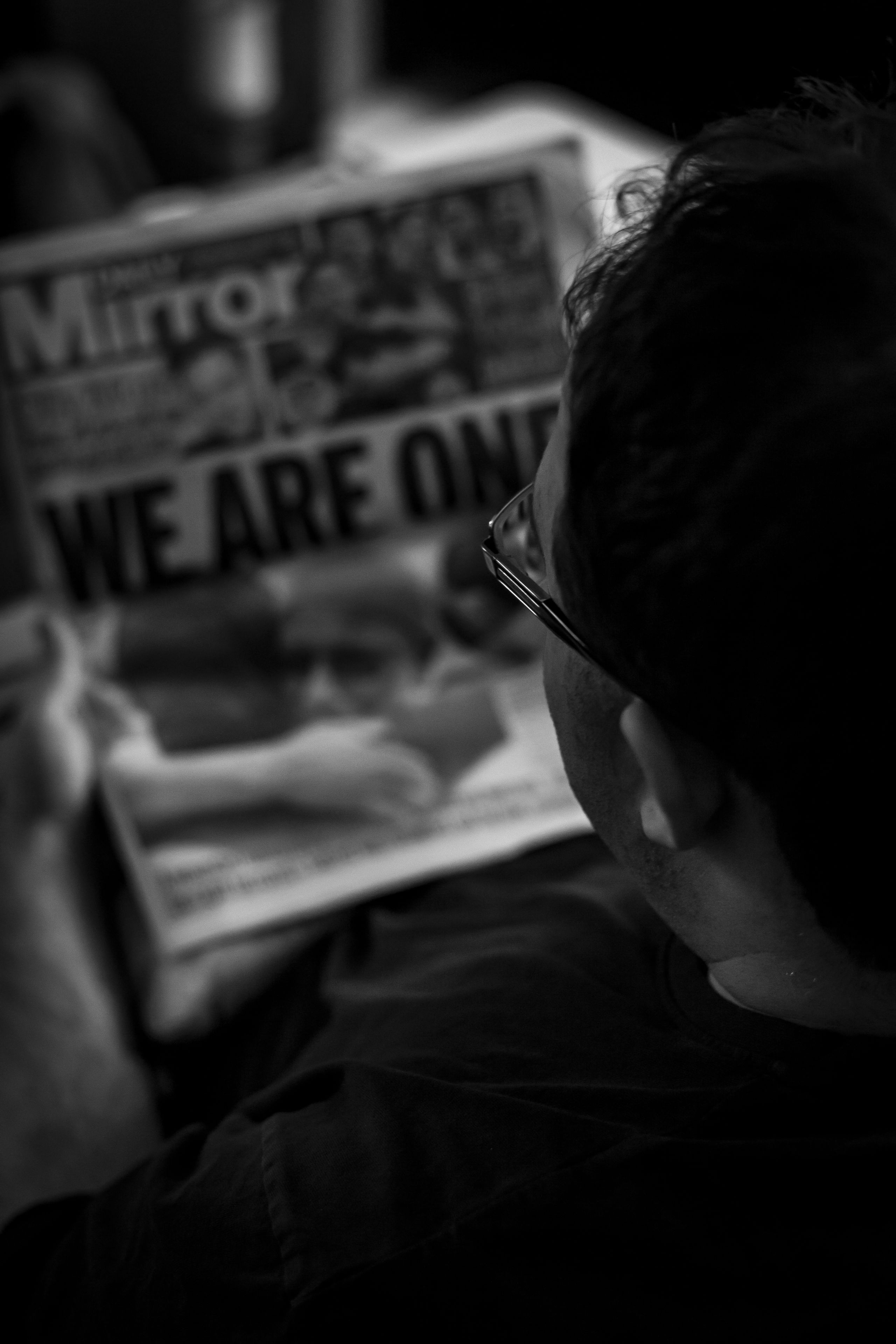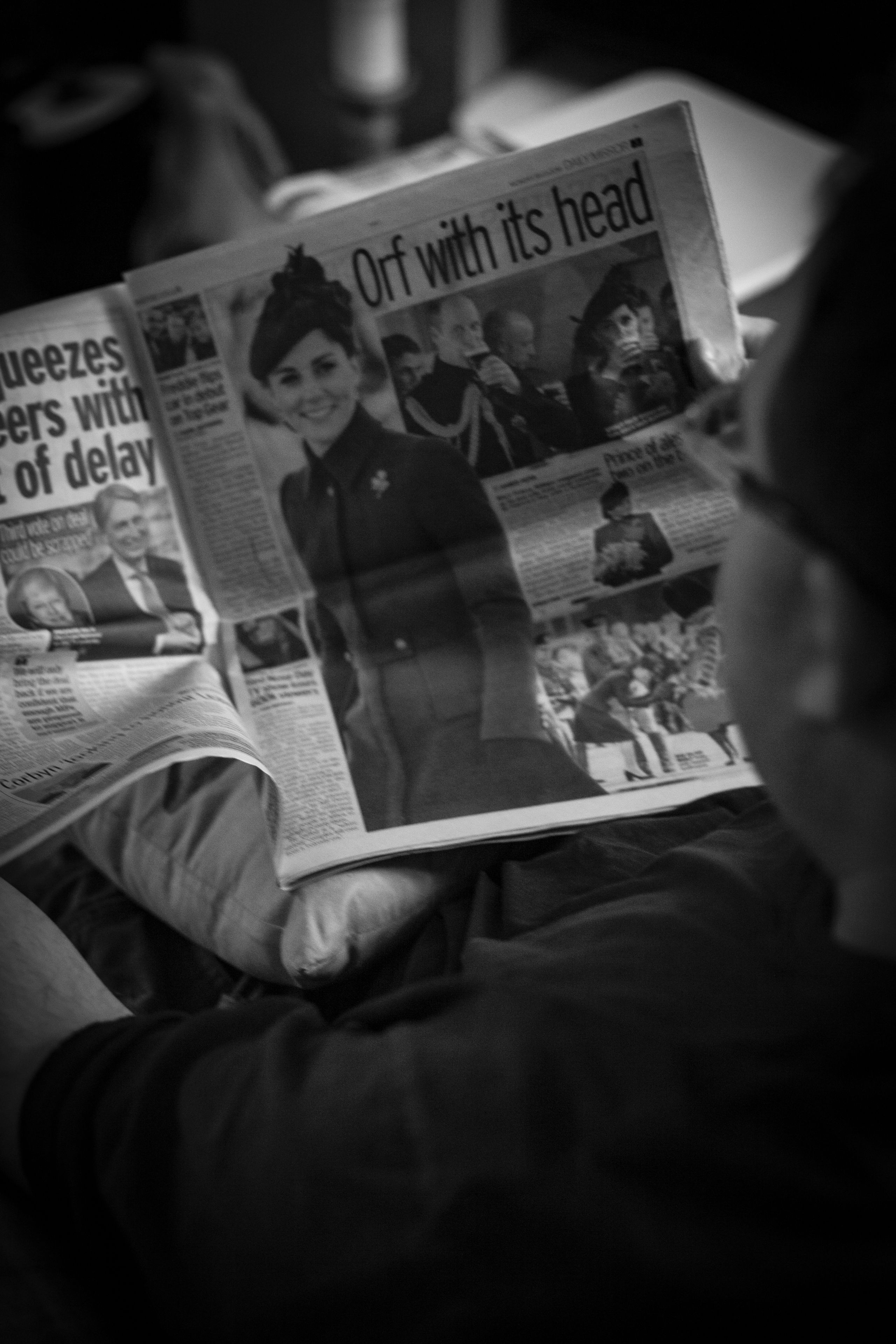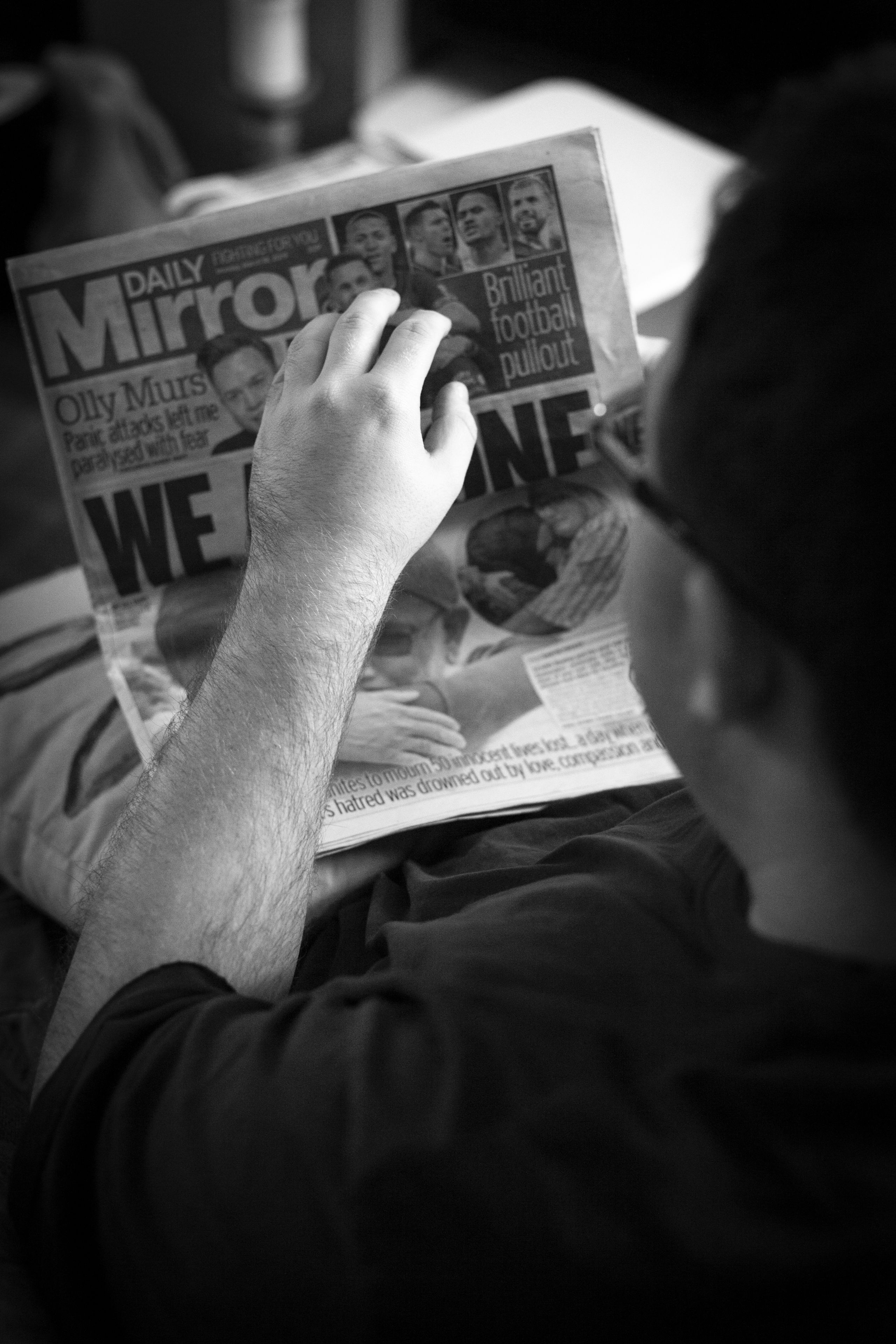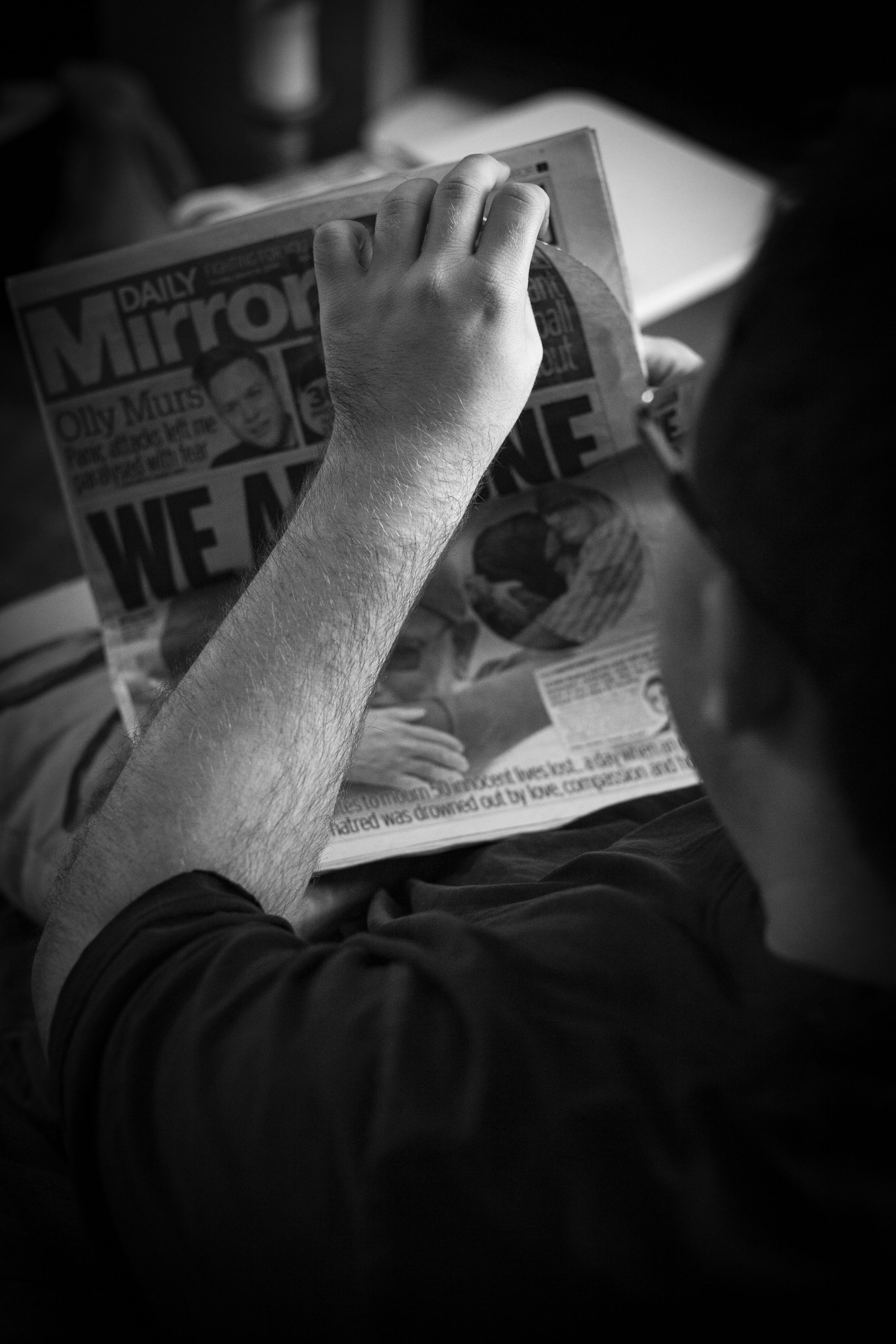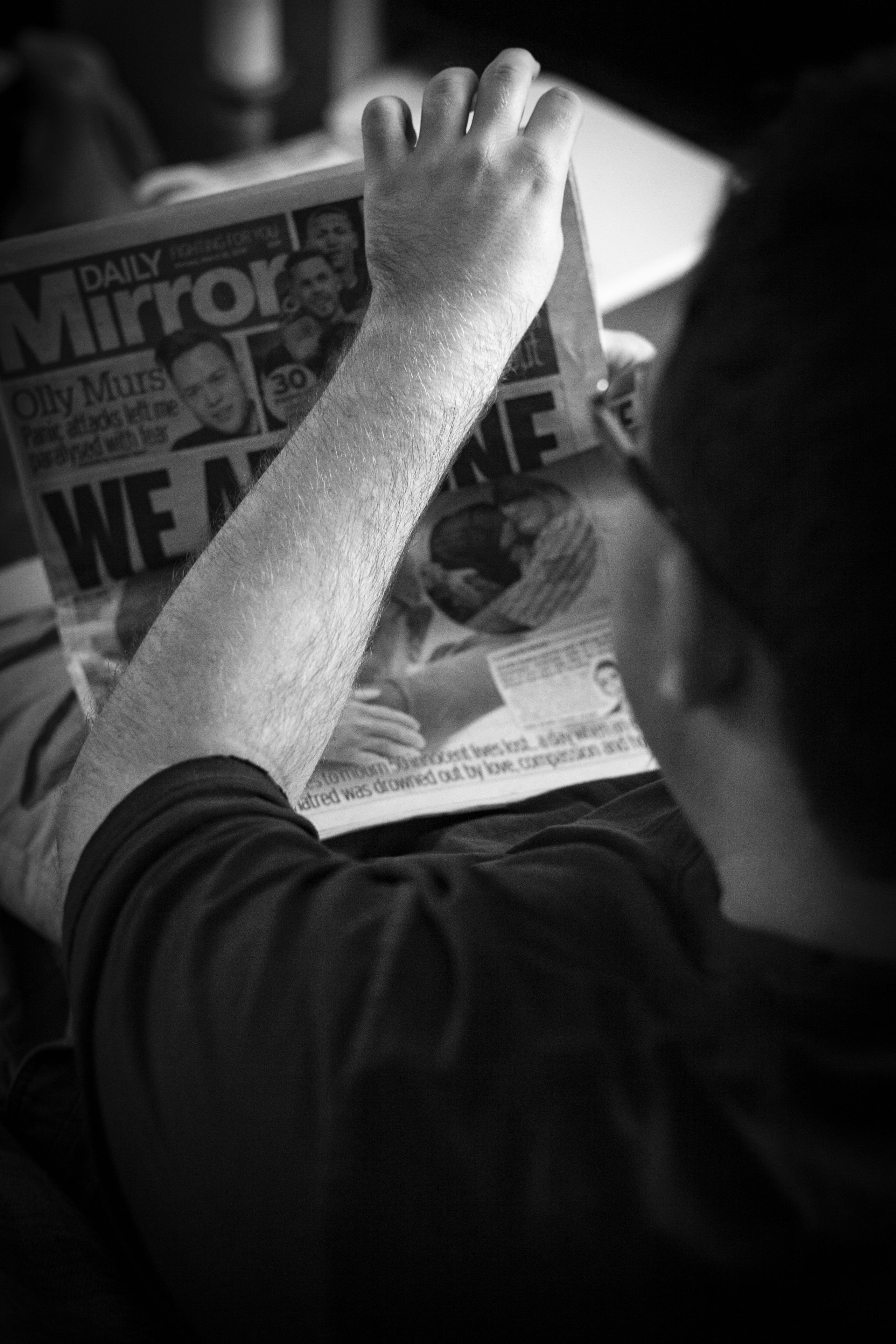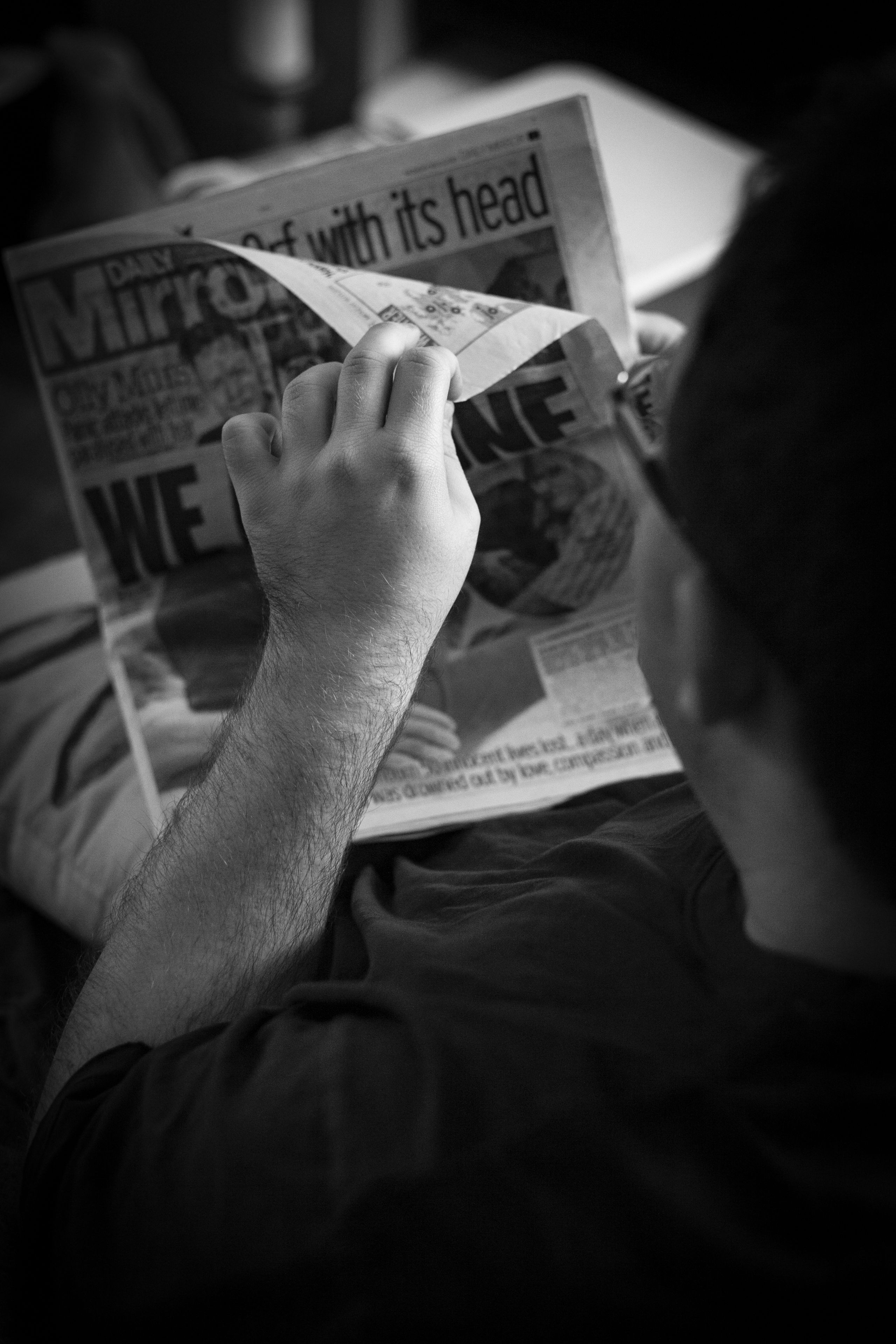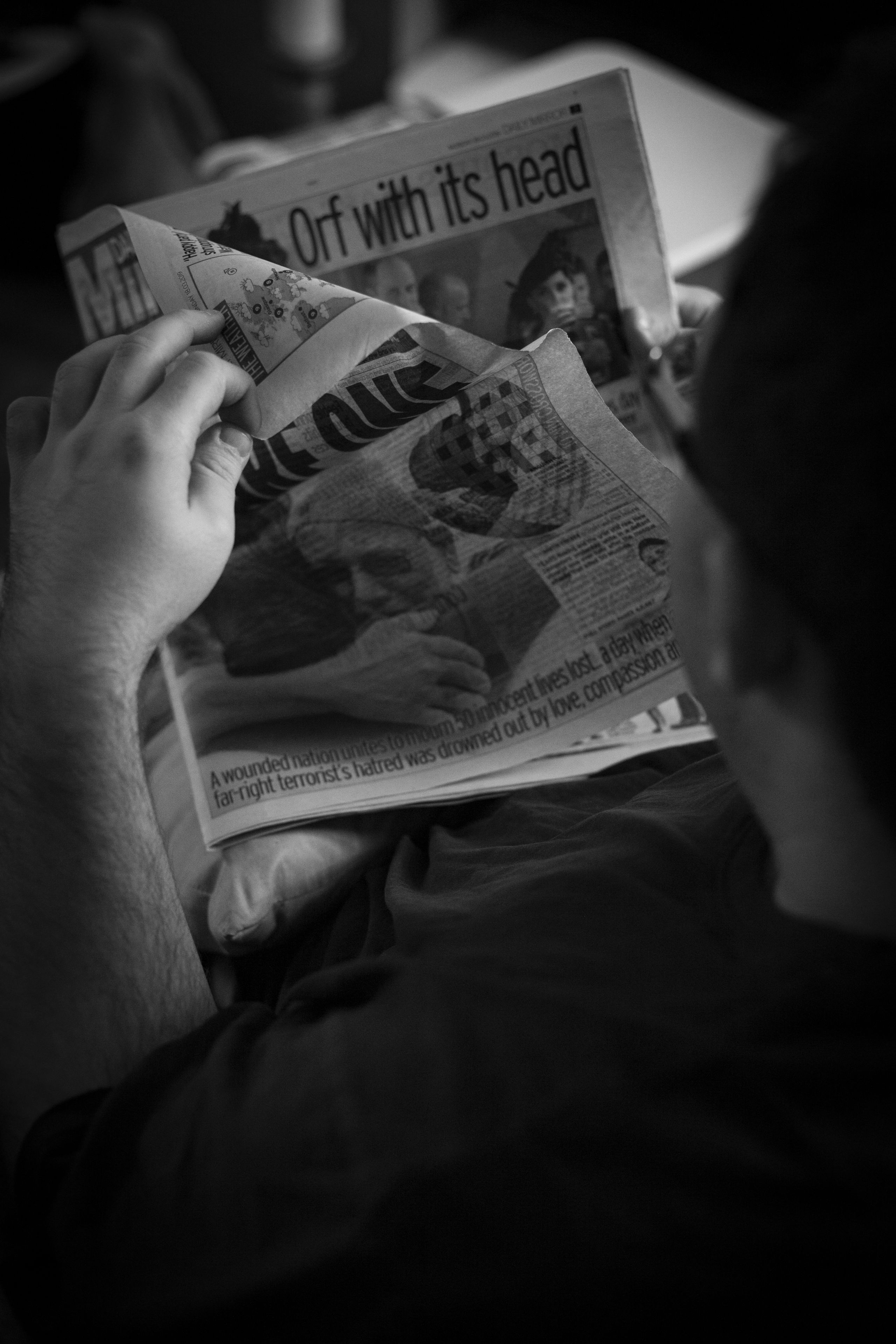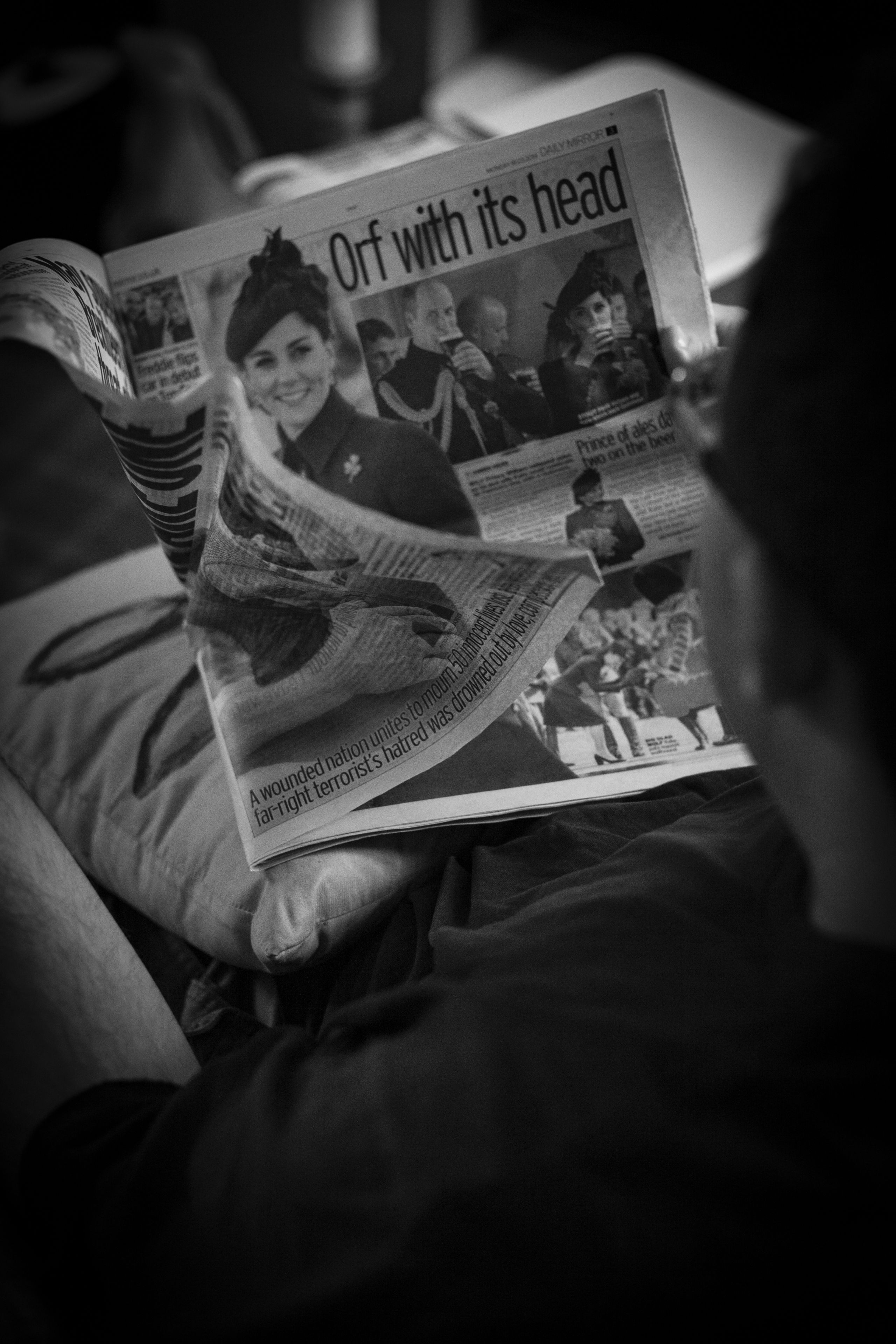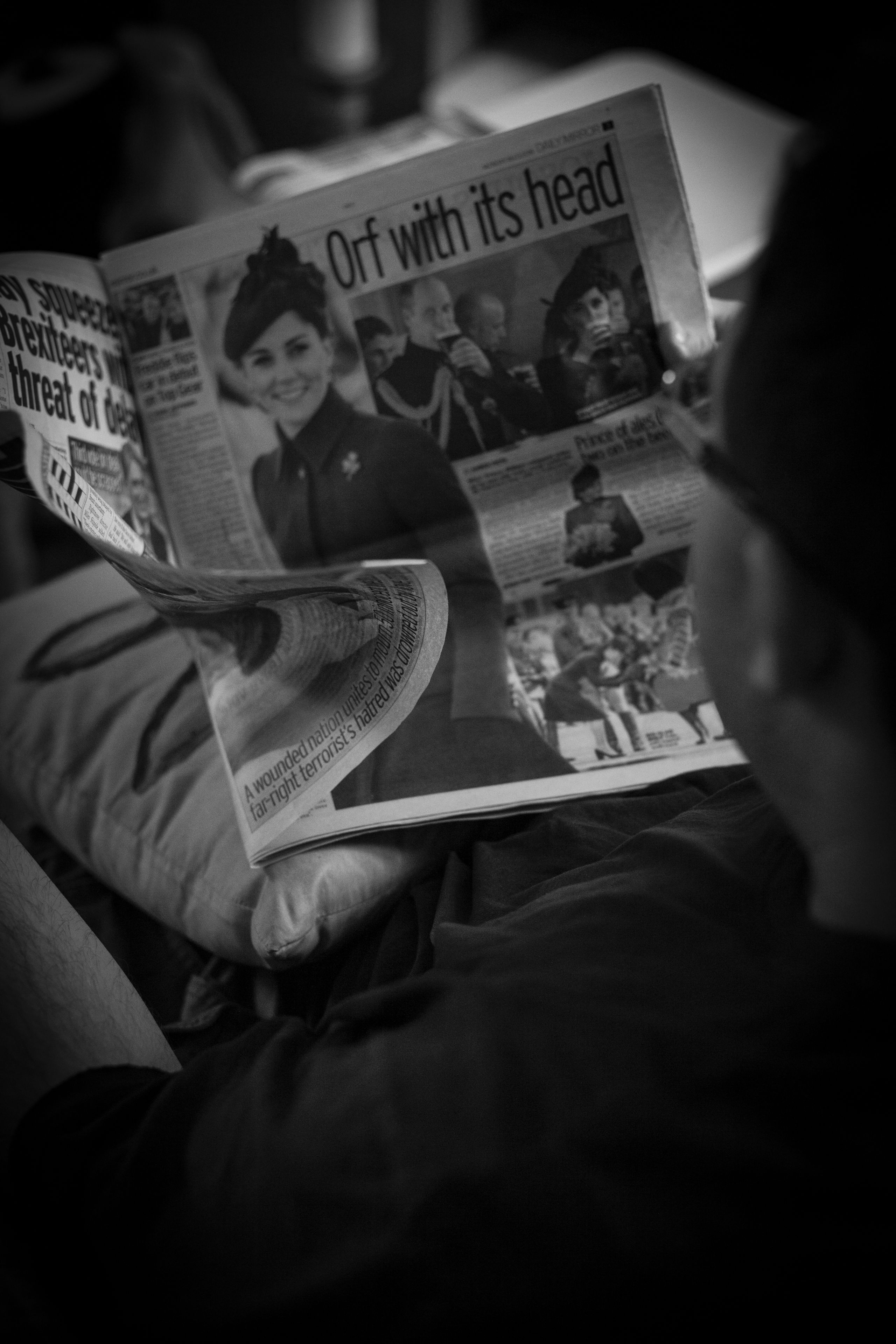Is the Print going Extinct?
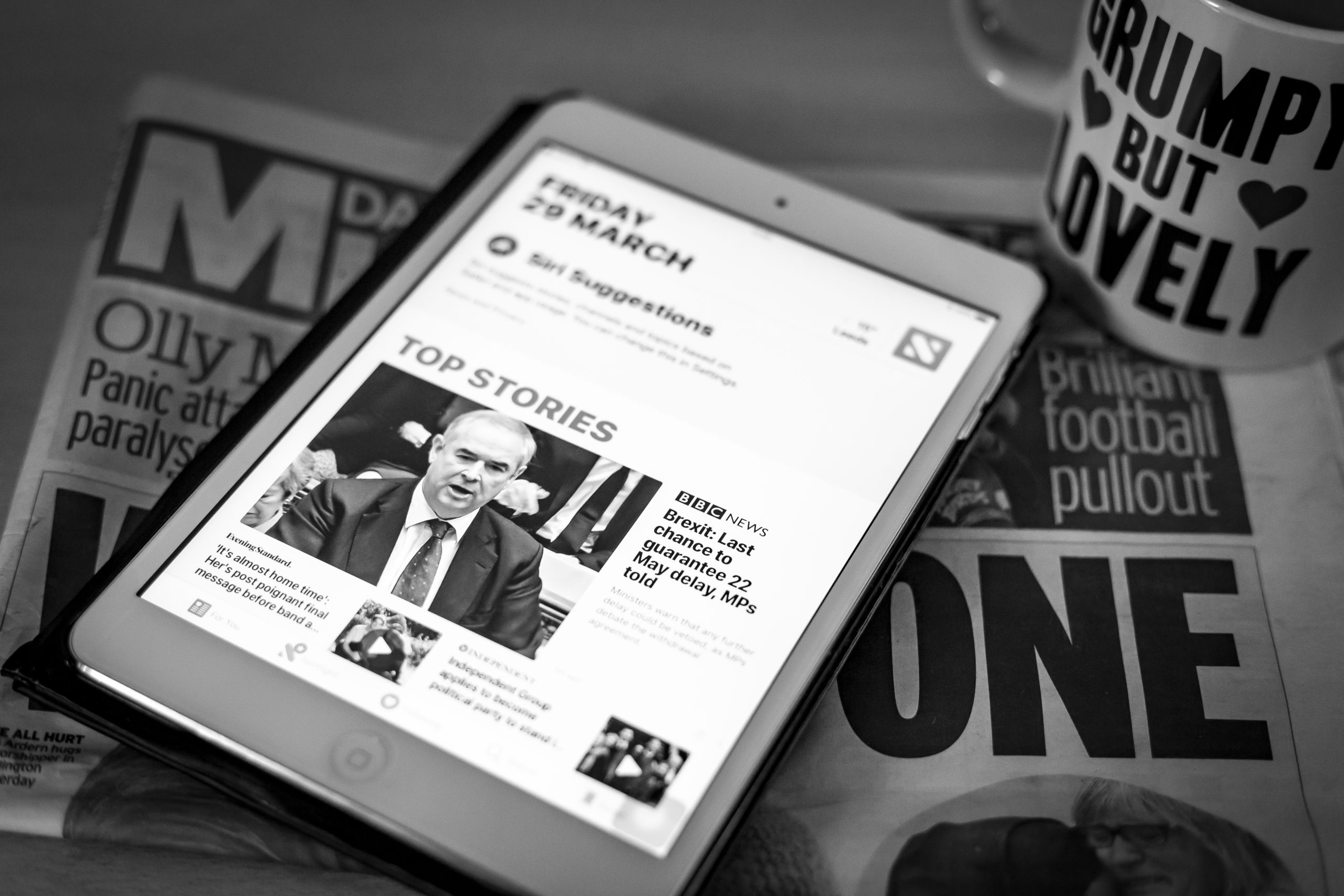
Running my fingers over the cover of the freshly purchased graphic novel, I felt content as I slid into the black leather sofa with the glossy pages in one hand and a big mug of green tea in the other. Everything simply drifted away like a distant dream as I turned page after page of the new exploits of the Lady Killer, which is one my favourite comic books of all time. Then, something occurred to me; the difference between reading on my Kindle and the sensation of reading a print copy. The difference between the two, both physically and emotionally, was intriguing and I found myself mentally comparing the two rather than my attention being on the book on my lap, that was now forgotten.
I contemplated why digital was becoming so popular, and why it has suddenly become a huge part of our lives. As well as being our main source of news and entertainment, DVDs have been left behind for Netflix, books have been thrown aside for the Kindle and the landline has been disconnected in exchange for the smartphone. Personally, my phone is my lifeline. It has everything I need, pretty much, and I find myself choosing to use my phone more than I should and a night of Netflix in bed seems more appealing than a wander into the cold for a glass of wine. Technology is, after all, convenient and that is why we love it. It makes things a little easier, rendering us a little lazier than we were the day before with every new gadget that comes along. Why nip to the shop in the rain for a newspaper or magazine when I can download it to my phone with the Kindle app, or just look it up on Google?
Frederick Douglas, the American antislavery writer, said in his autobiography that was published in 1845, that “Once you learn to read, you will be forever free”. He believed that the written word is a source of miraculous mental escape from the trivial trials of everyday life, alongside his belief that education is the best form of enlightenment.
Skip to the present day and still education and the written word is revered as one of the most important aspects of our lives. But there is a twist. The paper format is becoming less used and with the invention of glorious technology, paper is slowly being converted to the digital format which for companies is more cost effective. Magazines such as; Glamour and Cosmopolitan, have over the years developed their print copies onto their websites and have created applications for mobile devices to make their magazines more transportable and desirable to technology loving youths.
For the population of the world who do not own the internet this can be overwhelming and quite isolating. Newspapers are turning to digital means to reach more readers which means the elderly, and others who are not connected to the big wide world of the web, are suffering. Their favourite newspapers contain less information than their digital counterparts and, gradually, local news agencies are diminishing. Kristi Stripes, of the online publication Link Magazine, described the issue of the decrease in printed publications in 2013. Suggesting that it was because online advertising has grown in popularity. Stripes states that in the year 2000 global advertisement revenues were $152.2 billion worldwide. However, in 2011 print advertisement revenue were at a low at just $116 billion. Making it clear that digital content, particularly news, is becoming the love of the masses.
Even though statistically speaking this could be true there are those who still have a passion for print. There are more independent book shops opening than ever before and even though the eBook has become an easier option than running to the nearest Waterstones, print lovers still do exist. There are still those who can appreciate the smell and feel of a local newspaper and those who do not mind the extra weight of a paperback in their handbags.
Malcolm Patterson is in his seventies and loves getting his favourite newspapers from the shop every week. The Sun and the Evening Post have been a large part of his life for years. Even though he is an internet user, and an owner of a tablet, he says that there is no comparison between them, that newspapers will always be something he would happily spend his money on. Insisting when trying to use anything digital he becomes confused and frustrated leaving him to his only alternative for his consumption of news- the newspaper. Since he was a boy Malcolm has been an avid fan of the musty, ink covered sheets of information from The Sun. Sitting beside him as he browsed through his most recent copy, I could see a small smile spreading over his lips as he scanned the floppy pages. “As older people we don’t have much to do with digital,” he states. “I get a lot from newspapers, not a lot from digital.” From across the room his wife calls out, “I like the puzzles at the back.” Her bright eyes and wide grin told me, even in her late seventies, Sandra’s brain still loved a challenge.
Even though the couple use the internet for such things as Sky and Netflix streaming, their only source of news is the newspaper. This could be an issue in the long run if everything changes and turns to the digital format. As those who don’t own the internet, and others such as Malcolm and his wife, will lose out on everyday information as well as the news. As informative as some news channels on TV are, they do not always go into details about the event itself. Choosing to focus on the most dramatic news stories rather than the local stories which could affect the public who live in the talked about specific areas.
The ease of access to online news has become the love of the millennials. However, according to Pew Research who was mentioned recently in an article by Mic in 2013, even though they are reading news on apps, tablets and Kindles, they still want the traditional media experience. Preferring the features, and eBooks, themselves to look like their print counterparts. The fonts and headings simulating the print format without it actually being print at all. Which shows that these readers are still thinking about print while reading it in the way of the digital. Swiping through the pages of my own Kindle, I can understand exactly how they feel. Other than the font and layout of the digital book, everything else about interacting with the Kindle seems cold and distant, as though it is keeping you at arms-length. There’s no sensation of the rough, thin pages as you turn them, no musty smell of paper as you open a book or newspaper for the very first time. Reminding me when my dad once flipped his newspaper to open it and a wave of the pungent essence of fresh paper seeped into the air. With a digital device like the iPhone, Kindle or iPad there is no such smell. The handling of the devices feels robotic and cold compared to the prints homely, rough pages and inky smell. But, who knows, perhaps in the next decade or so such things will be transformed by digital companies as well like the new technology being used at Cineworld. A fully immersive experience with smells, vibrations and moving seats with whipping of fans as the film unfolds before you. A book version would be exciting in my opinion, but time will tell.
In 2015 the eBook sales for Waterstones dropped drastically, causing a major rise in sales of their print copies. James Daunt, the chief executor of Waterstones, insisted this was because the public are absorbing reading in a variety of ways. Also, he goes on to discuss that the release of certain titles encourages readers to choose the print version to add to their growing collection, which the Kindle cannot compete with experience wise, “A bookshelf of real books makes its digital imitator seem pale indeed.”
With the population growing up with digital devices the loom of paper being forgotten could still be a cause for concern. Children growing up with mobile devices, tablets and computers it could well be that the new generation will disregard paper all together. Children as young as eight are now being given mobile phones and other devices which could cause, in time, an increase in digital media consumption. An article by CNN in 2017, explained the concern about the issue of device addiction suggesting that children are spending more than three hours a day staring at the screen of a digital device and those who are older, such as; teenagers, stare at their mobile devices for around six hours a day.
When examining my own time spent using my devices, I was shocked to see that I pick it up 55 times a day over a period of 7 days. The new update provided me with a screen time app, allowing me to monitor the time I spend on my phone and what I do while it is in my hand. Over a full week I spend 17 hours and 44 minutes on my phone, with 13 hours of that being spent social networking. It’s amazing to see how much time I spend staring at a screen. It not only affecting my body with regular headaches and insomnia, but also distracting me from tasks which should be more of a priority.

Looking at the habits of the modern child, in the past the way to soothe them was by reading them a story or being creative with paper and paints. Nowadays, children are being soothed an entirely different way, by using technology. Instead of imagining what Alice in Wonderland is doing as their parents read them a story before nap time, they are now watching the new adventures of Peppa Pig on YouTube. Overexciting their brains which in turn makes it harder for them to sleep. Paper and paints have been exchanged for an iPad, the Apple Pencil and an app. Creativity being gradually moved from the traditional ways to the digital, similarly to the paper format of news and magazines and by the recent media coverage, and horrifying incidents, concerning Momo it’s clear that the internet also needs better monitoring arrangements to protect the physical and mental wellbeing of children who uses it.
Even though digital seems to be taking over and minimising the use of traditional forms of news, Pauline Hope, a member of the Oulton Institute, believes that traditional and the digital can co-exist and that both have positives and negatives.
Arriving at the meeting place, a local pub which she attends regularly, we ordered each a coffee and began casually discussing the concepts which might lead to the extinction of the print copy. She described her ideas through sips of coffee, saying that you hold a newspaper a different way to a device, which makes it the more social form of media. By holding up a device in front of your face you are blocking out the world, focusing on the device rather than what is going on around you. So, if someone tries to converse with you or ask you something important you are too far in your own world to hear them. She had a good point, “it’s more of a barrier because it’s like I am focusing on this! Where at least a paper can be sort of like laid down…you’re more aware of what’s going on around you.”
When you look around you most of the people on the bus, in coffee shops or simply just walking down the street are either wearing headphones, reading something on their phones or texting. All of which distracts them from what is happening around them, which in turn could have serious consequences. Walking while texting could lead to injury due to walking into obstacles, or even being hit by a vehicle in the street. Using your smartphone while having an interaction with someone else could be deemed as rude as you hide behind the screen, not really concentrating on what they are saying.
On being asked about whether the light of passion for print is being blown out, Pauline said, “Some people will only ever look at digital. But I think if you can do book reviews and do something to inspire somebody to go and do research and look things up it might be through a book.” She believes that with the right encouragement people will be made more aware of the options available to them. She continues to say that some people like to attend book clubs where they can freely choose a book each week and attend a meeting to discuss their opinions on it, which might encourage others to read a lot more.
During the interview for the podcast, we began discussing her own interests in magazines, and other forms of news media and it turned out, Pauline herself, reads her news mostly on Facebook or she looks it up on Google. I asked her if she reads newspapers or magazines and she replied, “Not as much as I used to do. I’m not quite sure why I stopped.” She continues, saying that she normally would read a print copy of something during a journey on the train or bus. When on the subject of convenience, she said, “because I cram so much into my day it’s having time to stop, so I would probably pick up the news on the television or search for it on the internet.”
Perhaps the fact that digital content is so convenient is the reason why people are so drawn to it. It’s quick and easy and online news is easy to acquire. Simply picking up your mobile phone and skimming through Facebook to find the latest news is far more attractive than walking to the shop in all weathers. But, as Pauline pointed out, those who don’t embrace the digital may lose out on sharing their own opinions and views that couldn’t do if they were to send a letter to a newspaper with their thoughts. How would they know if their voices were being heard? Facebook is a popular option to post those thoughts, and many do, both the positive and the negative.
Pauline, on being asked about her first memory of a newspaper, replied that her dad used to buy The Sunday Times, “it used to take a full week to read all the different sections.” She goes on, saying that during her time at college she would buy the same newspaper and would never get the chance to read it all because there was so much content, “I thought it’s just a waste. Sometimes spending time writing all these different articles and I’m not having time to read them.” Those who are on a tight schedule could be losing out on vital information or articles of interest if they get distracted, or overwhelmed by the mass of papers in front of them when picking up a magazine or newspaper.
When she was a young adult Pauline used to read the glossy mag Cosmopolitan. The articles of strong feminist views, lifestyles and outlooks appealed to her, but as she became a mother and grew into herself, she now enjoys the design ideas in the magazine Woman and Home. Besides design ideas, it also has articles and information of being an entrepreneur and setting up your own business, which all relates back to her love of feminism and female empowerment. Raising her boys to not rely on their partners to take care of them and to support their partners to succeed, “You’re not just striving for yourself; you’re striving to educate other people.”
Society says that the most popular form of news is the word of mouth. If someone read’s something that they find interesting they will share with their friends, family, co-workers and anyone in between. In the land of marketing, the importance of word of mouth is crucial to a successful campaign. You are far more likely to trust another member of the public, relative or friend’s opinion than a simple poster telling you something makes you have less wrinkles within a fortnight. So, when someone tells you that they’ve seen an article about a review of something, it is more likely you would run to your computer, or nearest Argos, to purchase it.
In the UK there are 868 book shops, and only 10 of those in Leeds City Centre alone. It might seem a small number in comparison to the rest of the country but in fact the number has increased over the last couple of years and those 10 are on the Best Bookshops in Leeds list!
I love to read book reviews and articles from the online feminist magazine Bitch Media because I know if they recommend a book to me it will be something in my line of interest. Even though Bitch Media have a subscription, and single copies available, of their print version I feel the prices are a little out of my budget. So, if I was going to trust anyone with my money when purchasing a new print copy of a book it’s the reviews I go to. Amazon and Goodreads are a particular favourite of mine and always bring me to the decision, whether I purchase it or not. Oddly enough, I also enjoy poking my head around the shelves in my local book shop to see what books everyone is looking at. The more people looking at the same book, the more it makes me want to take a peek at it as well.
Budget also seems to be an issue when deciding between the digital and print versions of content. The print version of a magazine, or book, appears to be more expensive than the digital version. For example; if I looked at a magazine, or book, in a shop it would cost me between £5 and £10 to purchase it. But, if I decided I wanted to purchase the digital version it would be far cheaper. In the past I have bought digital versions for around £2.99 before, even less sometimes depending whether it is an indie writer or not. So, budget is also a big decision maker for print lovers as well as convenience. Newspapers, however, appear to be still around the £1.00 mark which keeps readers happy when deciding to purchase one. Some newspapers, like the Metro that always linger on buses and around train stations, is always free to pick up and is filled with local content which usually satisfies the readers hunger for news content if they don’t feel like dipping their hands deeply into their pockets for change for a newspaper or magazine from a shop. The Metro, being on buses and trains during journeys, is also very convenient.
It appears both forms of media, traditional and digital, living side by side is important in our society. As Pauline said during her interview,“If there were no print left, just think about no joy for young children picking up their first book.” Then what about the other side, someone who is on their own and isolated from social situations and have no way of meeting new people could benefit from all kinds of digital news. But then, the print version of the news stories is just as beneficial. If someone is not very mobile, they may rely on print or digital to supply them with what they need, such as; news, human contact, reassurance or support.
I have witnessed myself that not all news stories are published online or in newspapers. Sometimes one story will be in one medium and not in the other, which excludes a large audience of readers. Still there is hope of these stories being made public to all types of readers: through the magic of vocalisation. Speech is one of the best ways of connecting readers with suggested content traditional or otherwise. In 2018, print sales rose 1.3% because of five best-selling novels on the market, the main seller being Michelle Obama’s Becoming. According to publishers weekly, the non-fiction title filled with her family, experiences and views sold 3.4 million copies! Proving that the love of news, or gossip depending on your views of non-fiction titles, in any kind of print form is still very much wanted and for those without any digital devices or web connection: needed.
However, side by side both, traditional and digital content, seem to be two sides of one whole. Both with their pros and cons and both with their own style and type of content, which may or may not end up on the same platform. In Pauline’s opinion there is a place for both, “people shouldn’t discount print. Either way, I think there’s a place for digital and a place for print. And I think they both need to be there together.”
On hearing her views on co-existing media styles, it’s hard not to think about the possibility of the advantages of it. Of the two becoming one to create a more powerful source of information. On the one hand those people without access to the internet are suffering because they, depending on their mobility and circumstances, are not able to express their opinions on matters or look deeper into news stories. Especially with both types of media having different content. They will have to drag themselves to the shop to find anything with news content, which could be an issue for some, but for others it’s a joy to go for a walk in the blistering heat or the bitter cold. On the opposite side, digital opens magical doors filled with information and worlds which entrap our imaginations with media content, fantasy, adventure and everything in between. You can Google anything and something will pop up with information about it, making Google the most popular search engine in the world, and social media being some peoples only source of communication.
To those with disabilities, mental health issues and social anxiety the internet is a wonderful thing as it allows the user to write, explore and explain their thoughts. Where offline they cannot express themselves fully and avoid situations which causes them distress, online they have the freedom to be themselves and search, read up on and socialise to their hearts content. They even have the opportunity to expand their knowledge on topics doing distance learning and maybe even meet that special someone!
Overall, after hearing these views, of both Malcolm and Pauline, it did generate some out of the box thinking of my own. That the issue of whether print is going to be extinct is a point of opinion, that print and digital can co-exist and that they already do. From my point of view, as a print lover, I can honestly say that digital is just as much a part of my life. In some ways too much. I own a Kindle, iPad, iPhone, MacBook and they all enrich but also stifle my life. As life goes on the more technology will adapt to the times and we along with it. It’s our choice whether to conform and adapt or not. Generations will be left behind, but it’s also our duty to inform and educate them so that they can explore digital for themselves. An elderly person, if willing, can be shown how to use an iPad or a computer by their families or a local workshop in the community. Other’s may not have the internet but there are libraries around the country who do and newspapers and magazines are still in print form. There have never been more options to consume news and the media and that’s what I’ve chosen to focus on. To look at that the passion for print is still intact; we just have a lot more options on how we decide to consume it.
Listen to my full podcast with Pauline Hope here!
